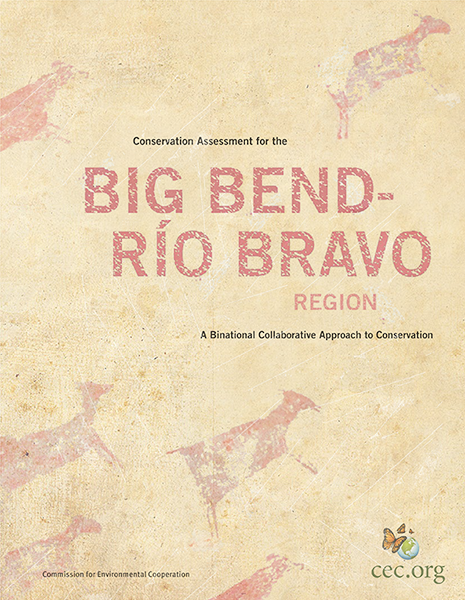Conservation Assessment for the Big Bend-Río Bravo Region
A Binational Collaborative Approach to Conservation
Conservation Assessment for the Big Bend-Río Bravo Region
A Binational Collaborative Approach to Conservation
Description
The borderlands of the Chihuahuan Desert, in the Big Bend-Río Bravo (BBRB) region, have one of the highest levels of diversity and endemic species among the world’s arid and semiarid ecosystems. This large binational area, comprised by a total of eleven protected areas in Texas, Coahuila, and Chihuahua, offers a unique opportunity for conservation because of its isolation from human settlements and the unfragmented nature of its landscape. Private land conservation efforts underway in both countries add an important dimension to these efforts by extending the region’s conservation potential to include essential habitat for mammals, birds, aquatic and other species from the Davis Mountains and Marfa in the north, to the Sierra de Hechiceros and Lagunas de Sanchez y de Montoya in the west, the Devils River to the east, and the Sierra de Santa Rosa to the south.
To that end, 60 experts from federal and state governments and civil society from Mexico and the United States were convened in Mexico City on 5–7 September 2012, by the CEC, to identify conservation targets, important ecosystem services and functions, areas of special interest, threats and opportunities, conservation and restoration tools, and site-specific monitoring and research needs. This Assessment makes general recommendations for protecting the region and describes 29 priority conservation areas (PCA), which are areas of importance due to their ecological significance, threatened nature and opportunities for conservation, that are in urgent need of protection and restoration actions. Its goal is to assist local stakeholders in identifying opportunities, strengthening existing partnerships, and reaching out to build new cooperative initiatives across the BBRB landscape.
Additional Information
